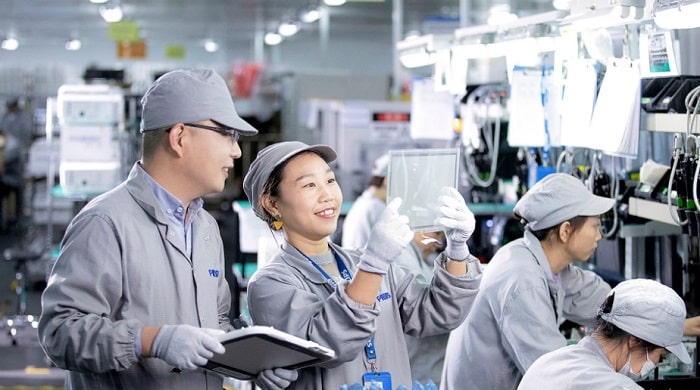Philips becomes the first health technology company to have its entire value-chain CO₂ emissions reduction targets approved by the Science Based Targets initiative (SBTi). Philips also awarded ‘double A’ score by global environmental non-profit CDP for leadership in corporate transparency and performance on climate change and water security – Philips’ 10th consecutive A-list score for climate action
Net-zero across the value chain
Incentivizing its suppliers to commit to science-based CO₂ emissions reduction targets is a key part of Philips’ efforts to reduce emissions across the company’s end-to-end value chain. With 40% of its suppliers (based on spend) now committed to science-based targets [1], Philips is already well on the way to achieving its 50% supplier commitment target for 2025. Combined with the carbon neutrality already achieved in the company’s operations, across Scope 1 (internal) and Scope 2 (energy sourcing) emissions, Philips’ added focus on its Scope 3 (value chain) emissions puts the company firmly in line with the Paris Agreement 1.5⁰C target. Philips is the first health technology company to have its Scope 3 CO₂ emissions reduction targets assessed and approved by the Science Based Targets initiative (SBTi), which means all the company’s climate change targets are now SBTi approved.
In December 2022, Philips was awarded a CDP ‘A-list’ score for climate change for the 10th consecutive time and became one of only 15 European companies to achieve a double A-list score for climate change and water security – the highest score achievable based on its 2022 reporting.
“Having our Scope 1, 2, and 3 emissions reduction targets approved by SBTi and our sustainability performance regularly assessed by CDP demonstrates Philips’ commitment to building a transparent, just and low-carbon value chain in line with the Paris Agreement 1.5⁰C target,” said Marnix van Ginneken, Chief ESG & Legal Officer at Philips. “Reducing emissions in our supply chain has a potential impact seven times greater than the reduction of CO₂ emissions from Philips’ own operations, so reducing our Scope 3 emissions has a real knock-on effect, reducing our overall carbon footprint and that of our suppliers and customers.” For the industry as a whole, a report by Health Care Without Harm concluded that 71% of the healthcare sector’s worldwide Scope 3 emissions are primarily derived from supply chains [2].
As part of its wider Supplier Sustainability Program, Philips collaborates closely with suppliers, using the tools, expertise, and experience it has gained while greening its own operations to help suppliers identify and mitigate their emissions. In 2021, the company provided tailored feedback and guidance to 89% of its strategic suppliers, helping them grow their climate change capabilities while also achieving cost-effective carbon reductions.
Committed to sustainable logistics, Philips is one of 19 global brands signed up to the coZEV initiative’s 2040 zero-carbon ocean shipping ambition.
Downstream to customers and users
Philips’ proactive program of Scope 3 emissions reduction is not confined to the company’s upstream supply chain activities. The company also addresses emissions in its downstream distribution system, customer base, and beyond, including emissions reductions associated with the use and end-of-life management of its products and solutions.
In the design of new products, Philips applies its EcoDesign principles to address energy consumption and materials use, avoids the use of hazardous substances, designs for end-of-life circularity, and makes product packaging easier to recycle and re-use. The company’s unique BlueSeal helium-free in operations MRI scanners, for example, massively reduce the need for helium gas produced as a byproduct of fossil fuel extraction, while its MR PowerSave and SmartSpeed technology can reduce a system’s power consumption by up to 46% between scans and up to 53% during scans.
Another example is the embedding of circular practices throughout Philips’ operations, via materials and circular packaging initiatives that see boxes and materials constantly being circulated between its suppliers, warehouses, and the Philips shop floor, resulting in substantial cost savings and significantly reducing single-use packaging and waste. Philips also increasingly offers a trade-in on all its professional medical equipment so it can be responsibly repurposed or recycled when customers have finished with it, in line with its ambitious circular economy target to offer a trade-in on all professional medical equipment, and taking care of responsible end-of-use management by 2025.


















